halfbrew70
Well-Known Member
- Joined
- Feb 2, 2012
- Messages
- 50
- Reaction score
- 6
Hello everyone,
I am a complete newb to brewing and just finished my first real brew. I welcome any and all criticisms and tips
Method and Recipe
For my first all grain brew, I decided to try the BIAB method for a 2.5 gal batch and chose an American Brown Ale recipe kit.
The grains arrived pre-milled and pre-blended for a 5 gal batch, so I mixed it well and split it in half for a 2.5 gal batch. Here is the original recipe (for 5 gal):
2-Row Malt 7 lb 8 oz
Chocolate Malt 8 oz
Crystal 90L Malt 6 oz
Biscuit Malt 2 oz
+ 8 oz Malto Dextrin at start of boil
+ ¾ oz Centennial Hops for 60 minutes
+ ¼ oz Centennial Hops for the last 15 mintues (for flavor, none for aroma).
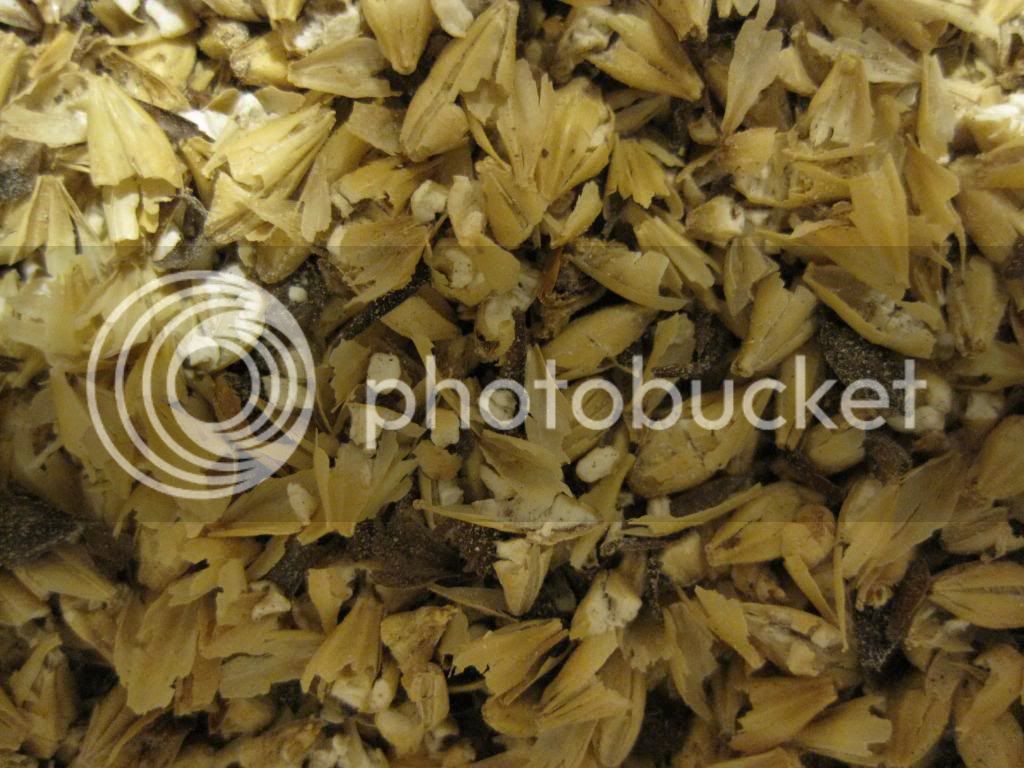
My brew pot is only 16 quarts and couldnt handle the total amount of water needed for true BIAB, so I planned for a small sparge and began with 3 gal of water in my pot.
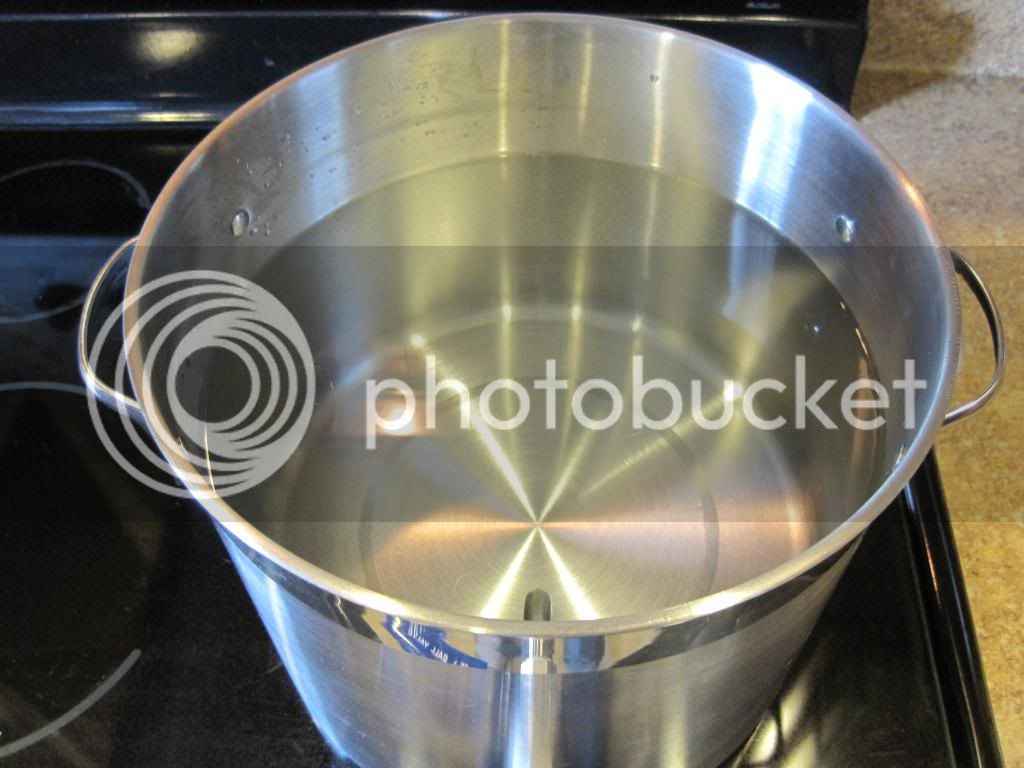
Mash
Recipe mash temp was 150F. I heated my water to 162F, set the burner on Low, and doughed in my grains.
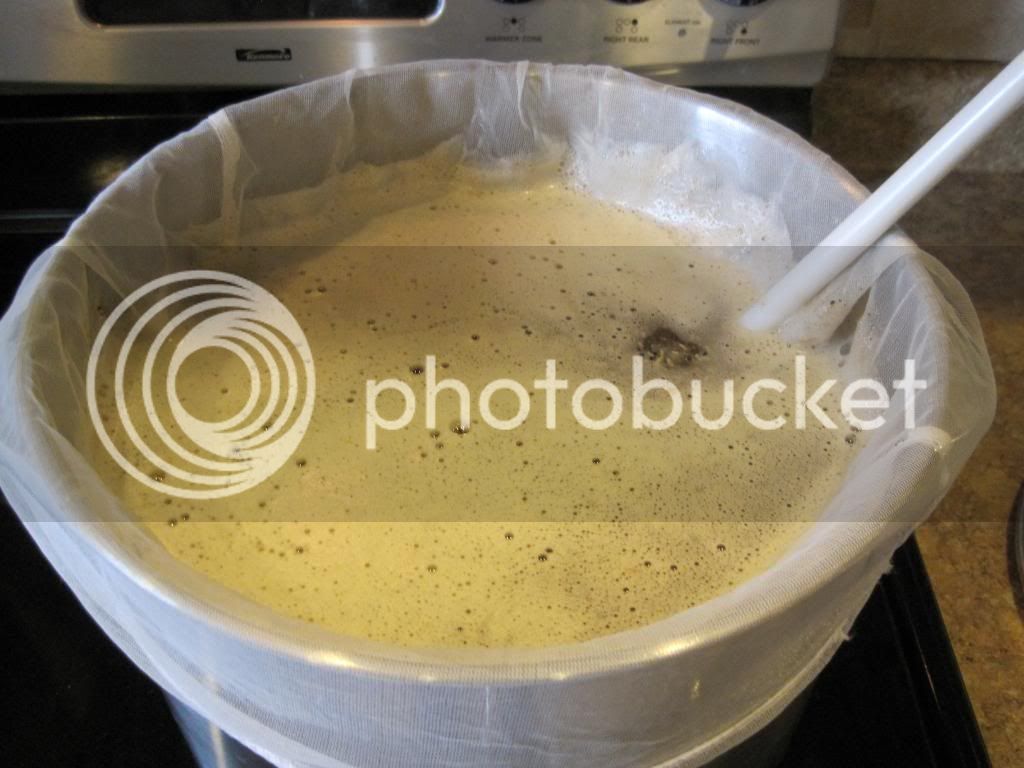
During the mash, I had difficulty regulating the temperature. Guess I need to get my burner settings dialed in. It kept me busy. The initial temp drop after adding the grains was less than I expected and the decrease was slow. Most of the time, I was close to the ideal temp of 150F, but had some dips into the 140s (145 the lowest), some time in the low 150s, and one short spike to 165F. My short swings were brought back gradually. I brought the spike down as quickly as I could by removing the pot from the burner and adding ice cubes. Note to self smaller changes and learn your burner settings!
I increased the temperature the last few minutes (reached 173F) for a mash out. My total mash time ended up being 1 hr 11 min.
Sparge
I removed the grain bag and let it drain into another pot. I sparged the bag with 2 quarts of 170F water, then squeezed and pressed the bag. Poured it back into my brew pot.
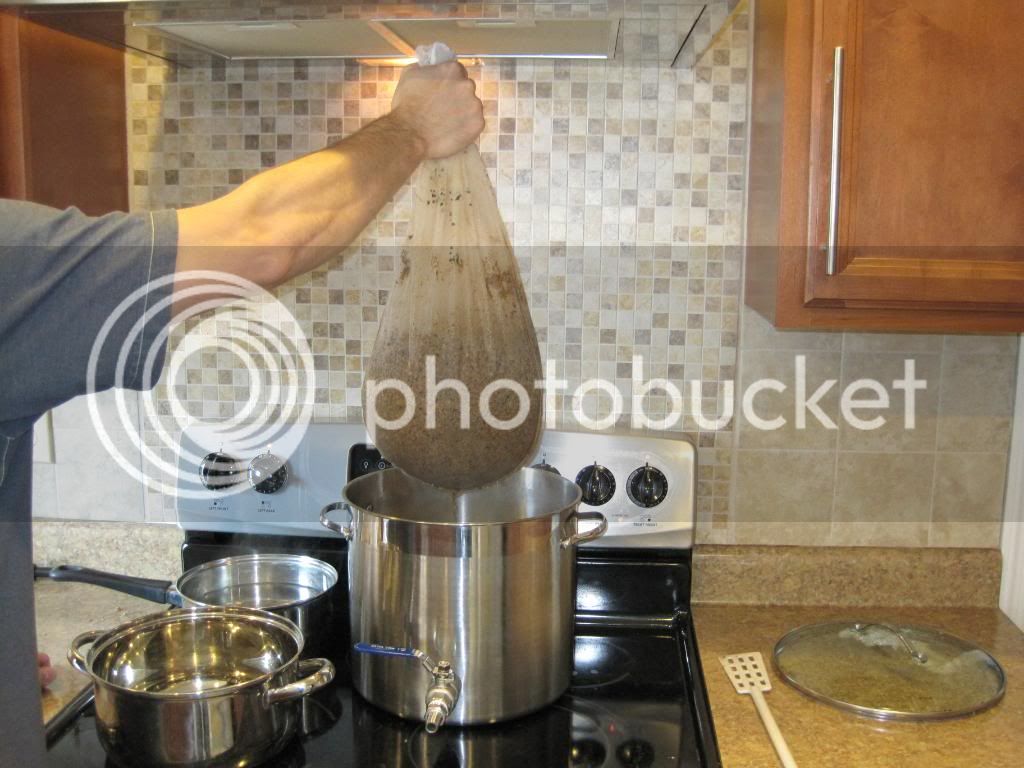
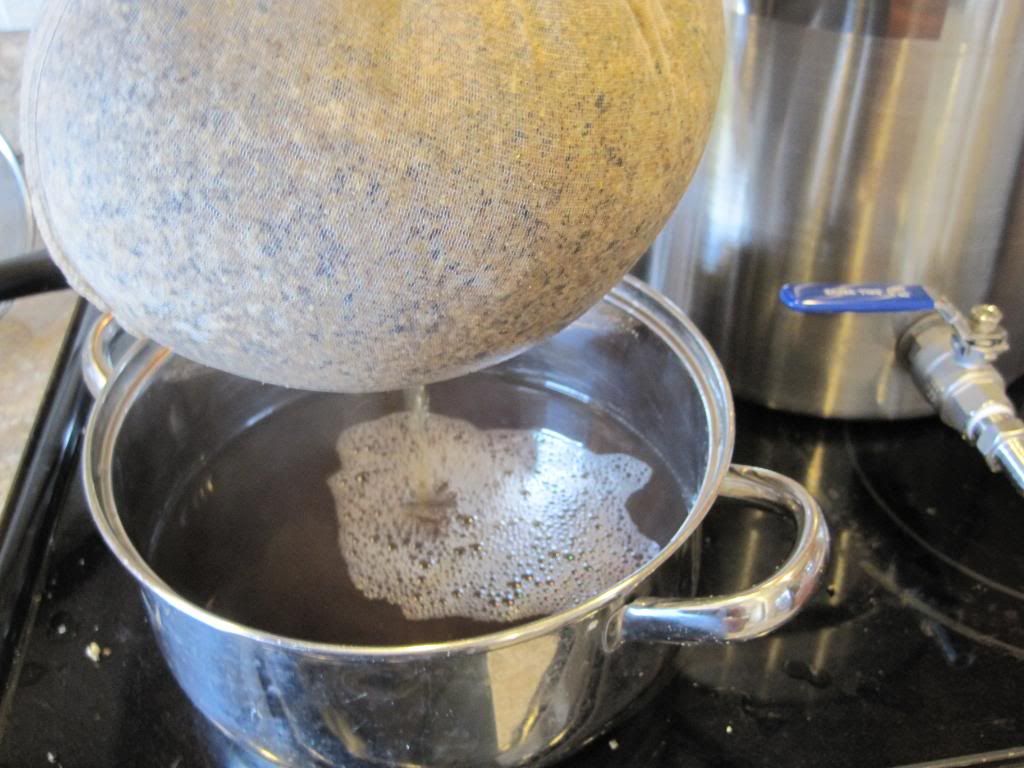
I took a pre-boil specific gravity reading. Uncorrected for temp, it read approx.. 1.026. The temperature of the wort was about 165F. I think the correction for my hydrometer (calibrated for 60F) takes it to 1.050.
Here is a photo of my pre-boil SG reading:
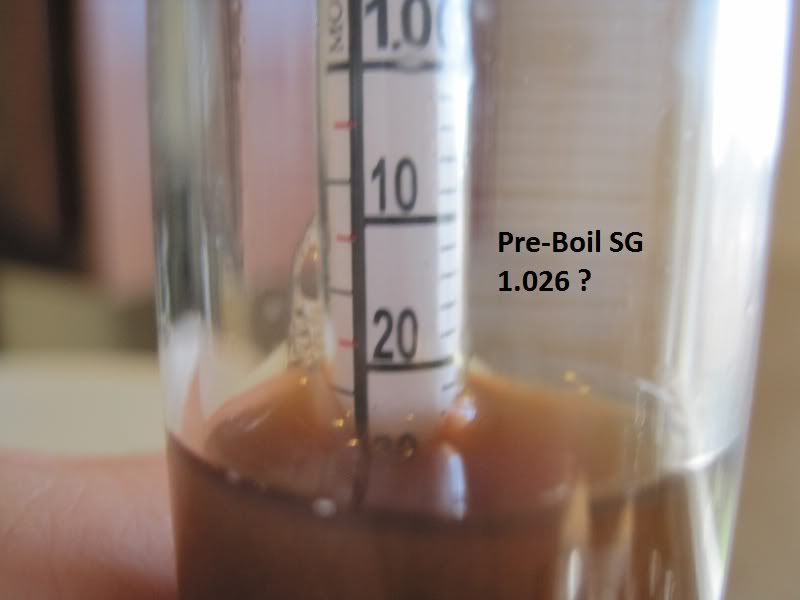
Boil and Chill
I boiled the wort for 1 hour.
I added the Malto Dextrin at the start of the boil and added the hops (in a bag) per the recipe.
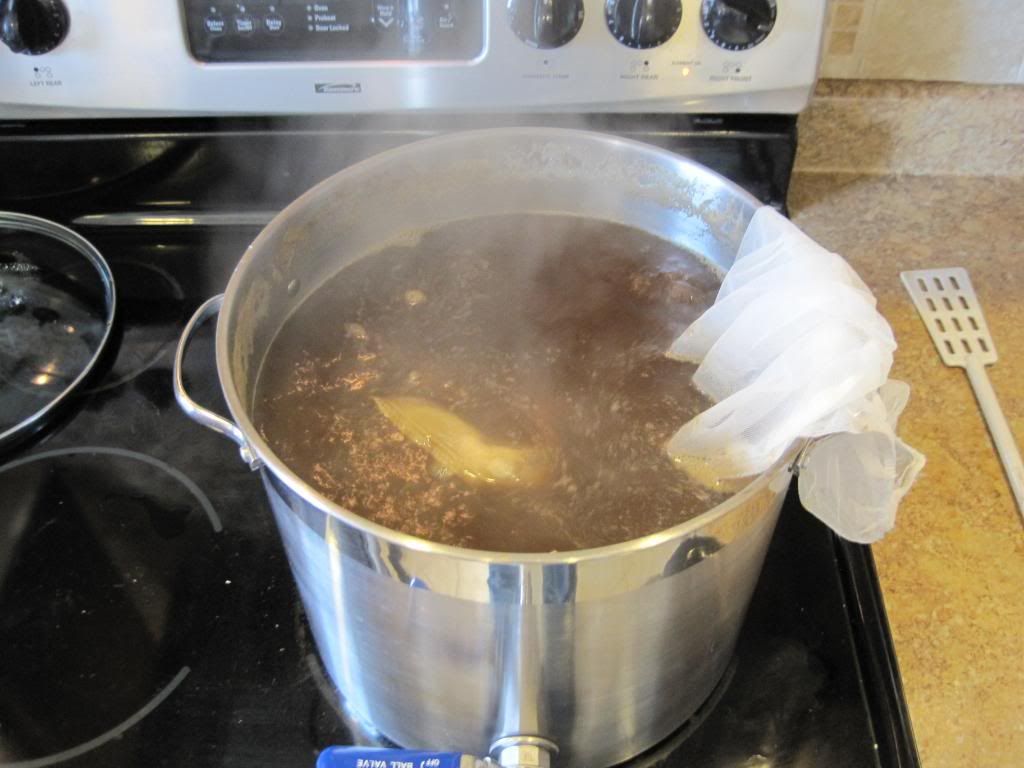
I immersed my tubing Chiller during the last 10 minutes of boil to sanitize. Once I began to cool the wort, the temp dropped quickly. Went from a vigorous boil down to 79F in 10 minutes.
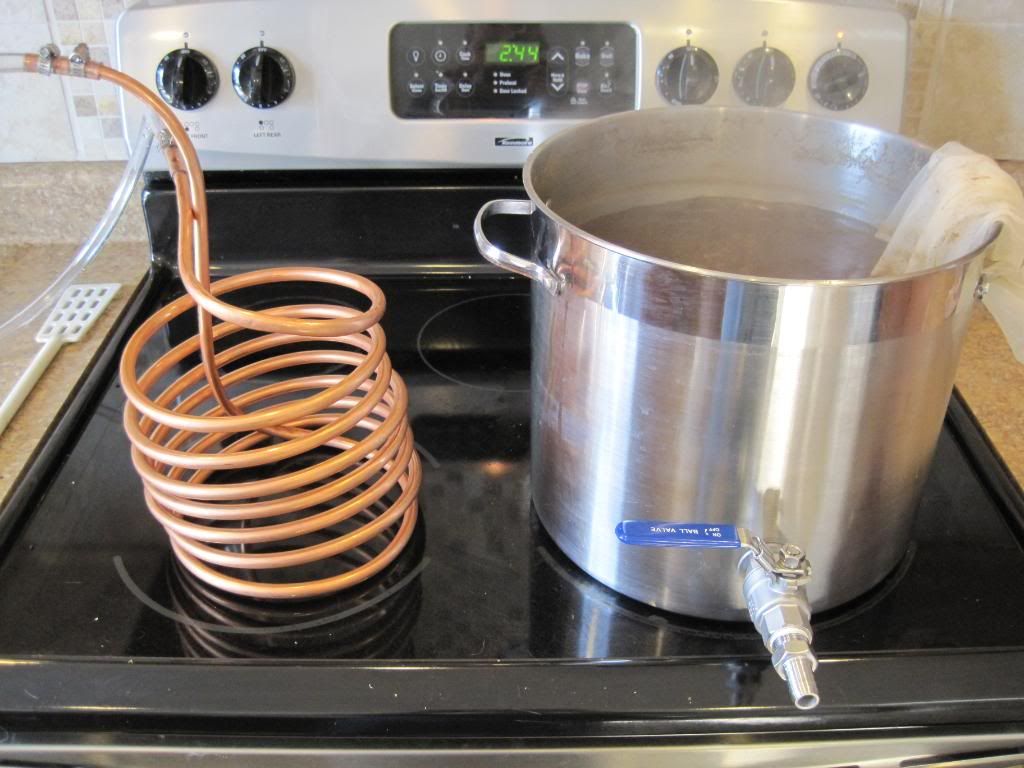
Fermenter and Original Specific Gravity
I drained the brew pot to my bucket fermenter. I used a 6 gal bucket, but read that the size was OK even for a small batch. I didnt have to add any water. I ended up with 2.5 gal of wort after absorption and boiling.
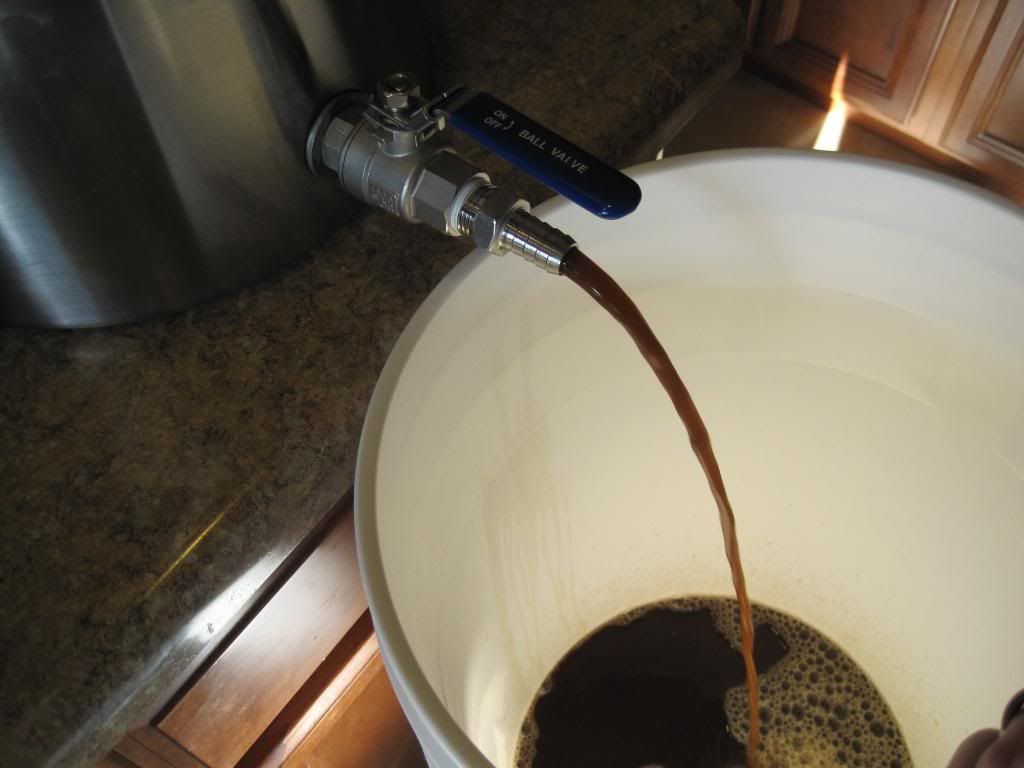
I checked the specific gravity. I had trouble pulling a good sample without getting a head of foam. I was using a beer/wine thief, but wasnt getting enough wort. Finally just dipped out some wort and poured it into the thief before inserting my hydrometer. I was getting rushed (almost time to leave for work), so after a few tries, I just went with it head and all. My best guess is that the SG reading at the wort/foam interface was 1.054. Corrected for 79F, it would be 1.056. The recipe called for 1.041.
Here is a photo of my post-boil SG guesstimate. I copied and pasted the hydrometer scale in the photo to give me a better idea.
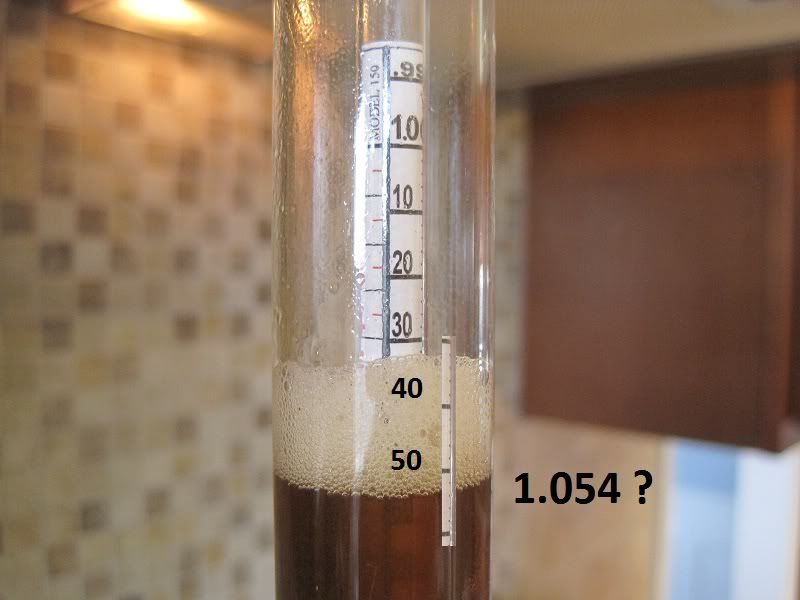
I sprinkled the SafAle US-05 dry yeast on the surface and mixed it up (thrashed it). Lid and air lock on.
Next chance to take a look was about 13 hours later. BUBBLES! Had a gurgle every 5 6 seconds. So, I guess something worked out!
Help?
It felt like a debacle at times. Hopefully it will end up OK. I dont really know if my SGs are OK and have no idea how to figure efficiency and all that. Much to learn!
Any tips will be appreciated. Thanks!
I am a complete newb to brewing and just finished my first real brew. I welcome any and all criticisms and tips
Method and Recipe
For my first all grain brew, I decided to try the BIAB method for a 2.5 gal batch and chose an American Brown Ale recipe kit.
The grains arrived pre-milled and pre-blended for a 5 gal batch, so I mixed it well and split it in half for a 2.5 gal batch. Here is the original recipe (for 5 gal):
2-Row Malt 7 lb 8 oz
Chocolate Malt 8 oz
Crystal 90L Malt 6 oz
Biscuit Malt 2 oz
+ 8 oz Malto Dextrin at start of boil
+ ¾ oz Centennial Hops for 60 minutes
+ ¼ oz Centennial Hops for the last 15 mintues (for flavor, none for aroma).

My brew pot is only 16 quarts and couldnt handle the total amount of water needed for true BIAB, so I planned for a small sparge and began with 3 gal of water in my pot.

Mash
Recipe mash temp was 150F. I heated my water to 162F, set the burner on Low, and doughed in my grains.

During the mash, I had difficulty regulating the temperature. Guess I need to get my burner settings dialed in. It kept me busy. The initial temp drop after adding the grains was less than I expected and the decrease was slow. Most of the time, I was close to the ideal temp of 150F, but had some dips into the 140s (145 the lowest), some time in the low 150s, and one short spike to 165F. My short swings were brought back gradually. I brought the spike down as quickly as I could by removing the pot from the burner and adding ice cubes. Note to self smaller changes and learn your burner settings!
I increased the temperature the last few minutes (reached 173F) for a mash out. My total mash time ended up being 1 hr 11 min.
Sparge
I removed the grain bag and let it drain into another pot. I sparged the bag with 2 quarts of 170F water, then squeezed and pressed the bag. Poured it back into my brew pot.


I took a pre-boil specific gravity reading. Uncorrected for temp, it read approx.. 1.026. The temperature of the wort was about 165F. I think the correction for my hydrometer (calibrated for 60F) takes it to 1.050.
Here is a photo of my pre-boil SG reading:

Boil and Chill
I boiled the wort for 1 hour.
I added the Malto Dextrin at the start of the boil and added the hops (in a bag) per the recipe.

I immersed my tubing Chiller during the last 10 minutes of boil to sanitize. Once I began to cool the wort, the temp dropped quickly. Went from a vigorous boil down to 79F in 10 minutes.

Fermenter and Original Specific Gravity
I drained the brew pot to my bucket fermenter. I used a 6 gal bucket, but read that the size was OK even for a small batch. I didnt have to add any water. I ended up with 2.5 gal of wort after absorption and boiling.

I checked the specific gravity. I had trouble pulling a good sample without getting a head of foam. I was using a beer/wine thief, but wasnt getting enough wort. Finally just dipped out some wort and poured it into the thief before inserting my hydrometer. I was getting rushed (almost time to leave for work), so after a few tries, I just went with it head and all. My best guess is that the SG reading at the wort/foam interface was 1.054. Corrected for 79F, it would be 1.056. The recipe called for 1.041.
Here is a photo of my post-boil SG guesstimate. I copied and pasted the hydrometer scale in the photo to give me a better idea.

I sprinkled the SafAle US-05 dry yeast on the surface and mixed it up (thrashed it). Lid and air lock on.
Next chance to take a look was about 13 hours later. BUBBLES! Had a gurgle every 5 6 seconds. So, I guess something worked out!
Help?
It felt like a debacle at times. Hopefully it will end up OK. I dont really know if my SGs are OK and have no idea how to figure efficiency and all that. Much to learn!
Any tips will be appreciated. Thanks!



 Well done OP Cheers
Well done OP Cheers
